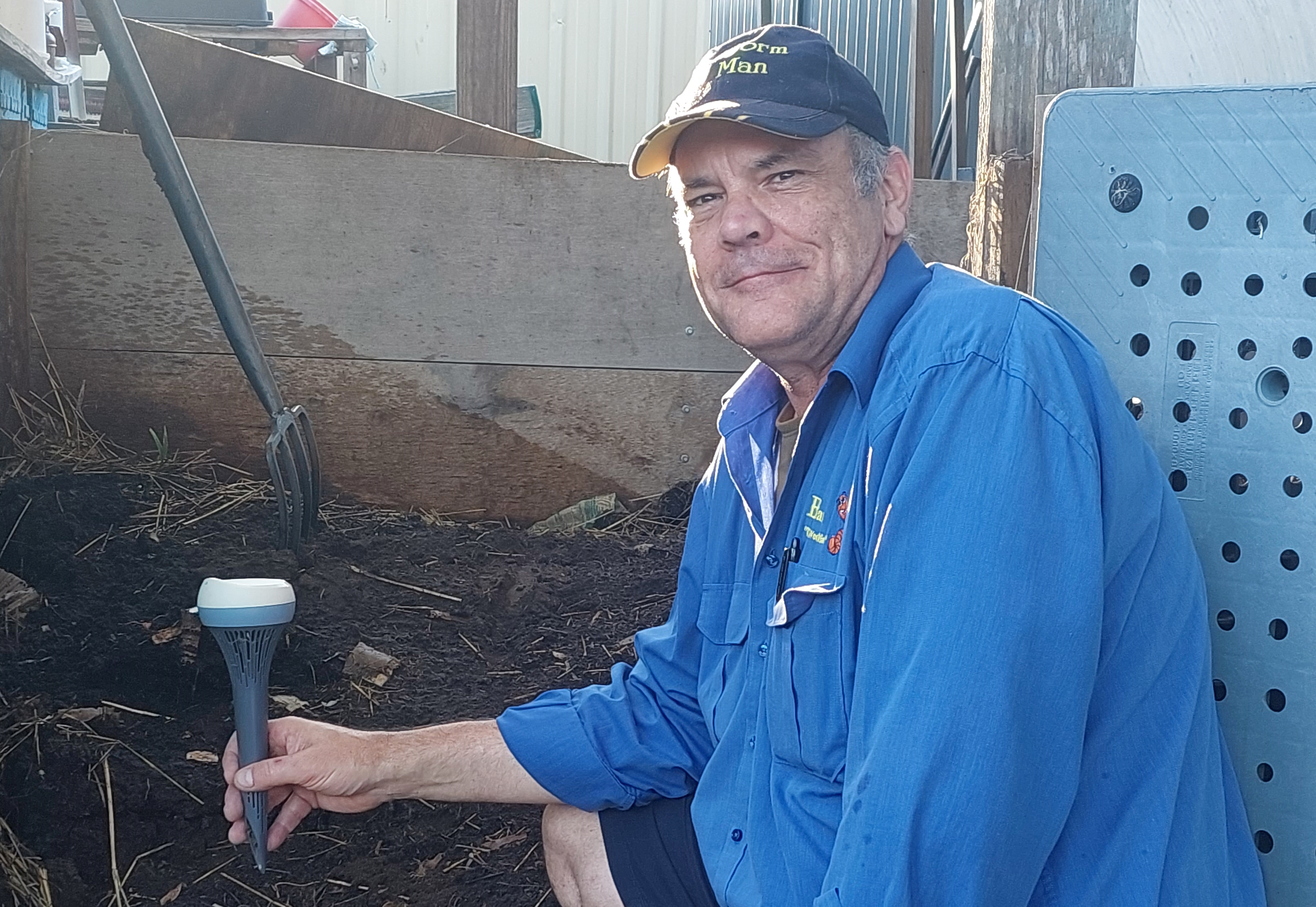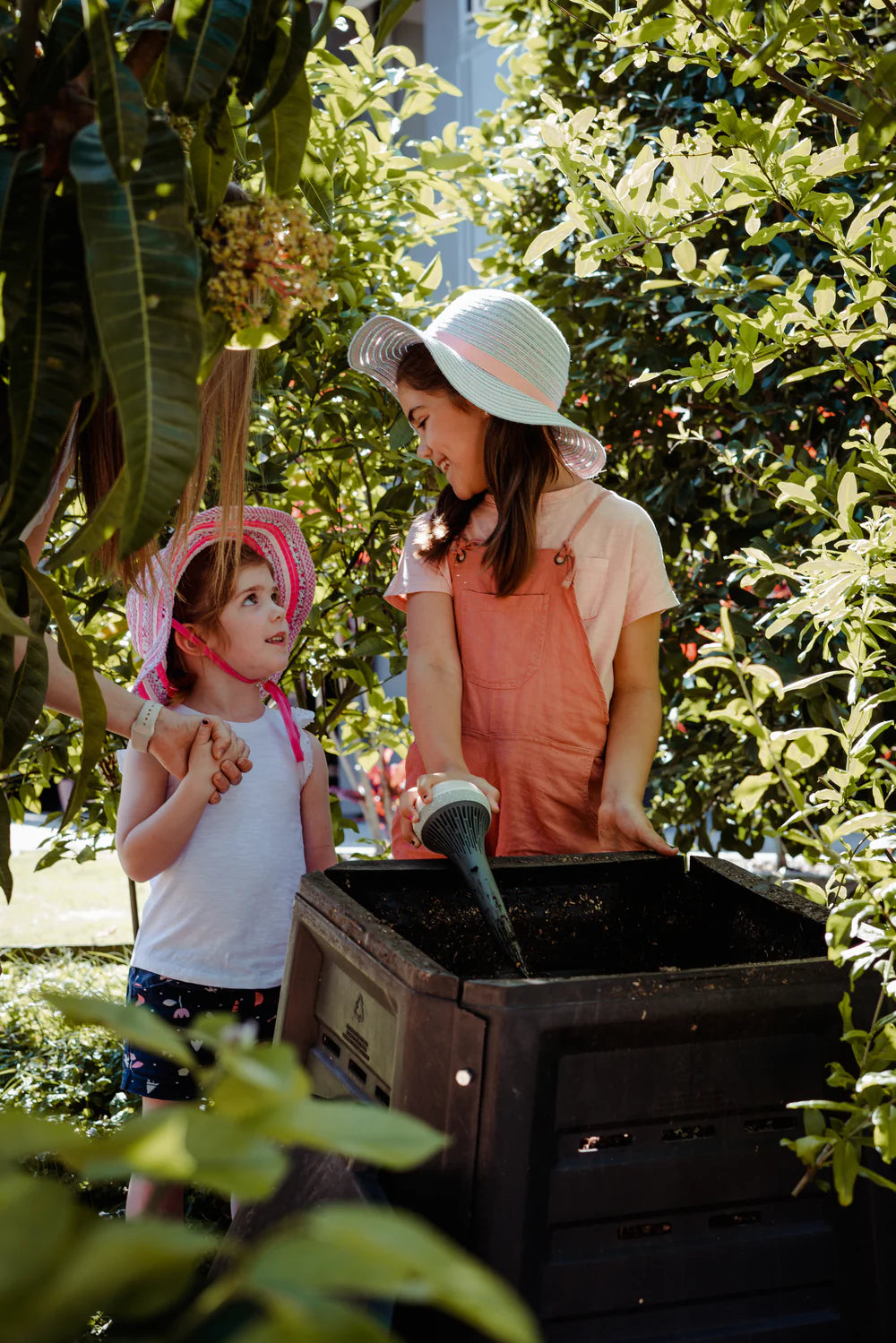Welcome to class. This is an introduction to the art and science of composting!

Composting is an incredibly fascinating, underrated field of science but it is far more complex than it appears on the surface. Translating the raw data into actions that best manage your compost takes a lot of expertise, which is exactly what we're going to change with our monitoring system! It's still super interesting stuff though so let's take a dive into what it is and how it works.
What is Compost
Everything decomposes ... eventually. In a few dozen millennia, even all the throw-away plastic we've produced will decompose, which we may or may not be around to see (hopefully it's the former). A good definition for the act of composting however is pretty much any decomposition of organic material in a controlled way. Fallen leaves in a forest is decomposition but you raking up those leaves and mixing them with food scraps is composting.
Because it's controlled, the end product of compost is usually a high-quality organic fertiliser, or compost or soil enricher or whatever you decide to call it. The end product is fantastic for repairing land, improving it, supplementing artificial fertiliser or even replacing it. Not only is it nutrient rich but adding it to land replaces important micro-nutrients, improves moisture retention and increases production.
How Does it Decompose
When you're shovelling up kilos of food waste and turning it every single day, it might feel like you're the one doing all the decomposition work. Not even close. The ones doing the hard yards are little micro-organisms called aerobic bacteria.
There are literally billions of these little guys in every gram of compost, working to process the organic matter into a more stable form. They are my absolute favourite part of composting because the colonies of trillions of them form this incredibly complex system capable of amazing things.
The aerobic bacteria fall into three main categories, that correlate pretty much entirely with the compost's temperature. They are:
1. Psychrophilic Bacteria
These ones are present from the very beginning, when temperatures are below 20˚ celsius. They do a little bit of decomposition but their main function is to heat up the compost with their activities to accommodate the next type.
2. Mesophilic Bacteria
Once above 20˚ but below 40˚, these 'mesos' can kick on in and really ramp up decomposition. They're also super important during the final maturation process, wherein they process any remaining decomposable matter.
3. Thermophilic Bacteria
As the prefix suggests, these ones are hot. Once over 40˚, they start to take over the Mesophilic populations and speed up decomposition even more. Between 55˚-60˚, the heat generated in this phase also functions to kills off any weed seeds and pathogens, making it super important to reach them. They tend to use up organic matter much faster, getting hotter and hotter, so are often at risk for overheating and creating conditions too hot for them to survive.
This isn't to disregard the macro-organisms either! These are things like beetles, worms, larvae, flies and other critters that physically decompose the compost by grinding and chewing it into smaller pieces.
Ideal conditions
So now you know all about how the organic waste is actually broken down but it definitely doesn’t end there. These dedicated aerobic superstars only work in certain conditions and can go absolutely crazy when they’re exactly right, breaking down organic compounds at light speeds. There are four main conditions to be aware of and getting those right is where you come in.
Temperature
So as we covered pretty extensively, temperature correlates with certain species of bacteria. As bacterial activity increases, so does temperature and the rate of decomposition - but only to a certain degree (pun absolutely intended). Even the most resilient thermophilic bacteria will either die or go dormant in temperatures around and above 70˙ celsius so keeping temperature in check is important. The easiest way to do this is either by turning it, which interrupts bacterial activity, or aeration, which moves temperature outside the compost.
Alternatively, if your compost isn’t getting hot enough, it’s probably because your other conditions aren’t in order, as we’ll soon find out.
Moisture
Water, the essence of life. We can barely go three days without it but these little composters can barely go three minutes! They do technically need way less than us though. The research varies on how much total moisture is appropriate on varying piles, as different feedstocks have drastically different water content, but generally 50-60% is a good aim.
While our fantastic monitoring system will be able to tell you this, until then, you can just physically gauge your moisture levels. You want to be able to squeeze a handful, have it keep its shape and maybe get a few droplets. If it falls apart, there’s not enough moisture. If it is dripping, there’s way too much.
Oxygen
Aerobic bacteria A.K.A oxygen consuming. This is pretty obvious. If the aerobic bacteria aren’t getting sufficient oxygen, which is around 5%, they’ll begin to die off and get replaced by anaerobic bacteria, the one’s that don’t require oxygen. These types produce methane and odours, exactly what you don’t in composting.
So how can you hit 5% oxygen? The best at home practise is to simply set up a consistent aeration method, usually either regular turning or a piping system. To note with that is that the oxygen introduced in turning is typically used up within hours at the most, making turning it not necessarily worth the effort. Having either forced or passive aeration (read PVC pipes with holes) is often a far better effort/oxygen trade-off.
Additionally, all the piping in the world won't help if your compost is a matted mess. It important to ensure that air pockets and channels exist throughout the pile for oxygen to flow. This can be achieved using hard, structural materials such as branches and twigs.
Carbon/Nitrogen Content
If you've heard about the carbon:nitrogen ratio for your compost feedstock, it's because that's the perfect amount of each to feed the microorganism. Carbon is their main energy source but nitrogen is critical in protein building and other vital activities. Just like us, if they're not getting the right foods, they just aren't going to work as hard.
The sweet spot is 1:25 - 1:30 carbon to nitrogen parts. All organic material has different carbon and nitrogen ratios though, which makes staying on top of this super hard. The usual rule-of-thumb is two green to one brown, where greens are nitrogen rich materials, such as kitchen scraps, and browns are carbon rich, such as dried leaves. This is super imprecise though so fortunately, we'll be including a tracker in our monitoring system that does all of the measuring for you!
In Conclusion
This has truly not even scratched the surface of the complexity, science and wonder of the field of composting. Even more intense is bringing all of this information together and making sense out of it to improve and speed up your composting. No wonder we're doing something will simplify it for you!
So make sure to follow Monty Compost Co on Facebook, Instagram and LinkedIn to stay posted on product development and when our monitoring system will be ready for you. Class dismissed!




Leave a comment
This site is protected by hCaptcha and the hCaptcha Privacy Policy and Terms of Service apply.